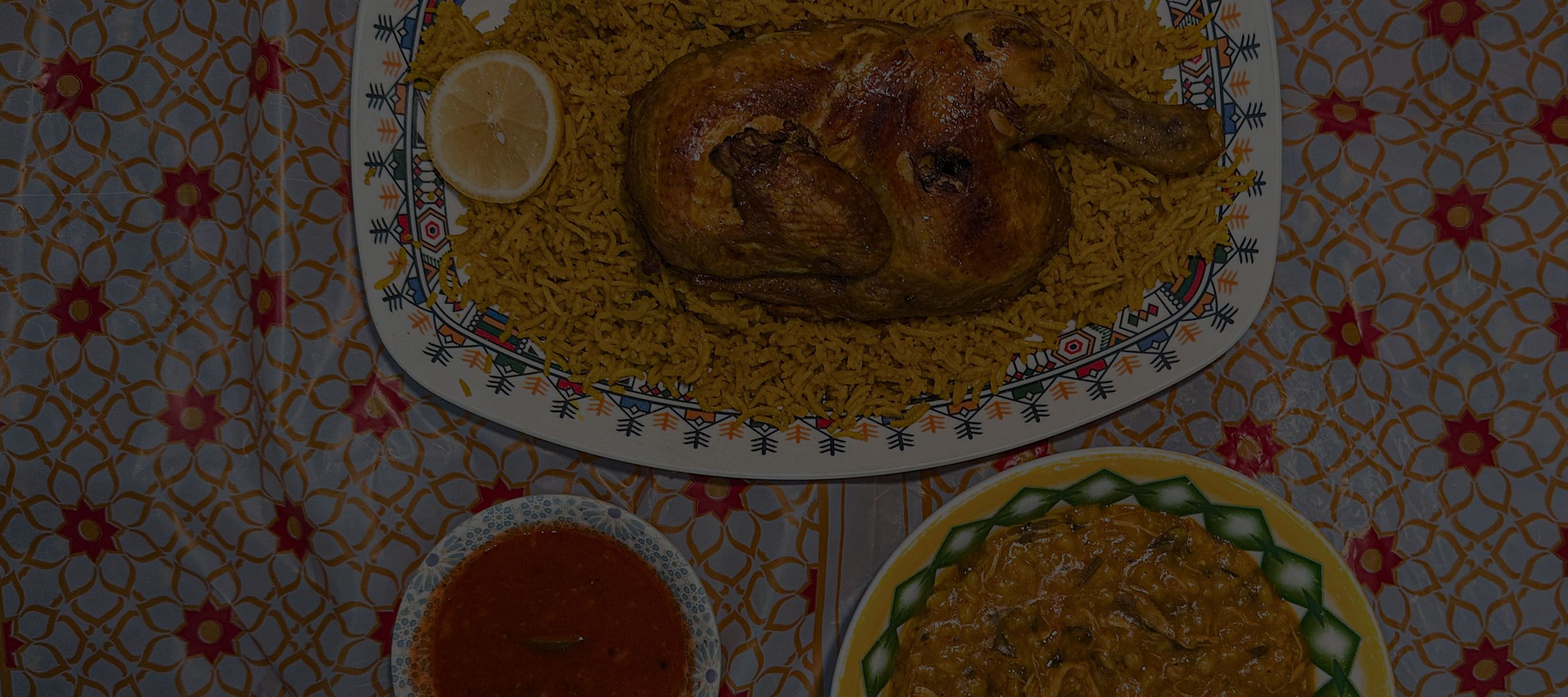

Must-Try Dishes in Doha & Dining Tips
Words by Sofia Levin
Last updated 18.07.2025
Long before Doha's skyscrapers and stadiums, stews simmered over desert fires and the catch of the day was infused with spices from afar.
Qatari cuisine has evolved over centuries, shaped by Bedouin nomads who roamed the desert and Hadar pearl divers who settled along the coast. Trade and migration have long expanded its flavours, from camelback traders and spice route sailors, to more recent waves of workers and expats. At its heart is karam, the Arabic philosophy of hospitality deeply rooted in generosity and providing guests with the best of what you have. Here’s what to eat in Doha, as well as some dining and etiquette tips I picked up along the way.
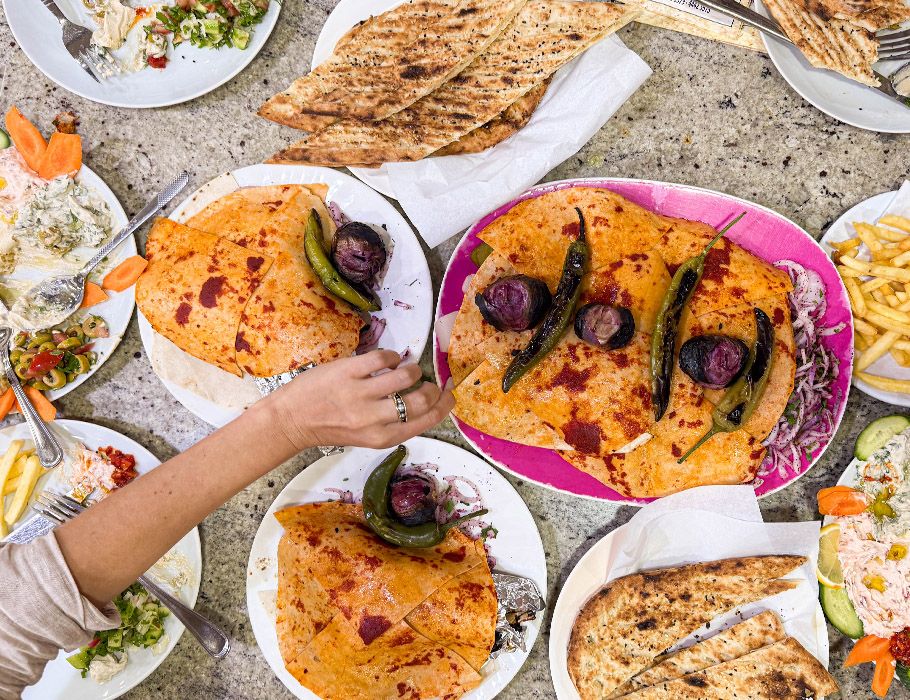
Qatari Dining Etiquette
1. Carry Qatari riyal. While many establishments take credit card, the smaller vendors don’t.
2. Try eating with your hands. It’s appropriate at traditional spots to dig in with your right hand – and I swear it tastes better when you do.
3. Don’t rush tea time. Karak (spiced tea) and gahwa (spiced coffee) are not just pick-me-ups, they’re rituals. Settle in and enjoy it.
4. Don’t expect alcohol. Many small family-run restaurants don’t serve alcohol, but it’s readily available at hotels and more up-market restaurants. The legal drinking age is 21.
5. Tipping is appreciated. Tip 10 to 15 per cent at nice restaurants and hotels (some include a service charge), and round up at smaller eateries.
6. Dress appropriately. Out of respect for the local culture, dress modestly. That means shoulders, upper arms, knees and chest should be covered at a minimum if you’re a woman, while longer shirts and pants below the knee are appreciated if you’re a man.
7. Follow the rhythm of the city. Some restaurants close in the middle of the day and reopen later. Others shut during prayer time. During Ramadan, locals don’t eat while the sun is up and many restaurants reduce their hours or close. After sunset, restaurants fill with the buzz of families feasting for iftar – a wonderful insight into culture and local life.
8. Be aware of special seating sections. In more traditional neighbourhoods, some restaurants still have different dining sections and entrances for men and mixed groups.
9. BYO tissues. Smaller local spots don’t always have them handy, and even when they do, I found there often aren’t enough.
10. Follow your nose. If you spot a queue, join it. If you smell something delicious wafting from an alleyway in the souq, follow it. Not everything can be Googled in Doha and you’re sure to be rewarded.
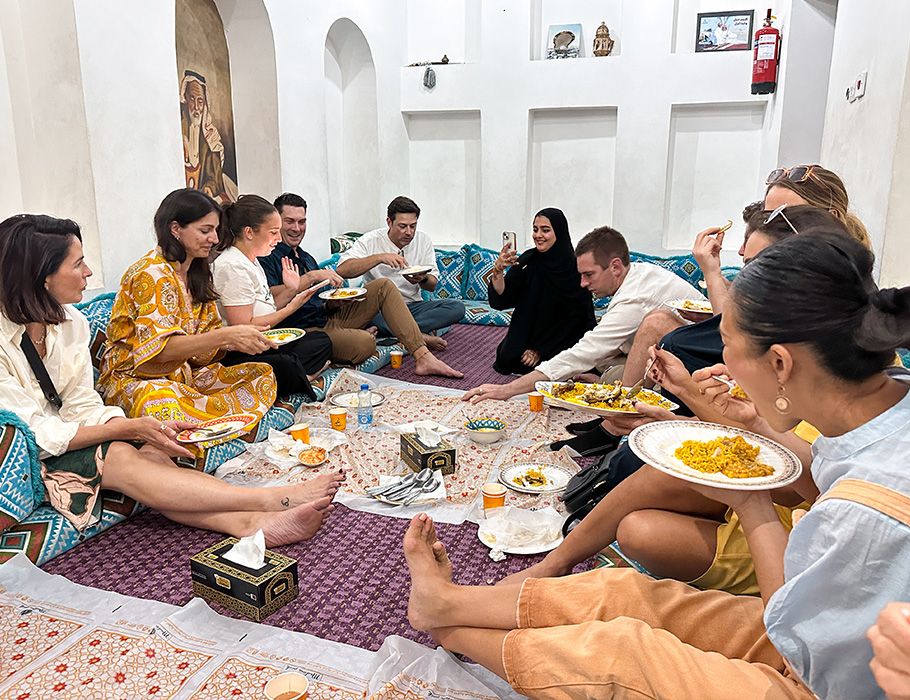
19 Must-Try Traditional Qatari Dishes in Doha
Machboos
Often considered Qatar’s national dish, machboos (also majboos or kabsa) consists of meat (usually chicken or lamb) and rice slow-cooked in the same pot. It’s fragrant with warm spices, loomi (dried black limes) and is likened to biryani. It’s usually garnished with fried onion and served with a bright tomato sauce and yoghurt.
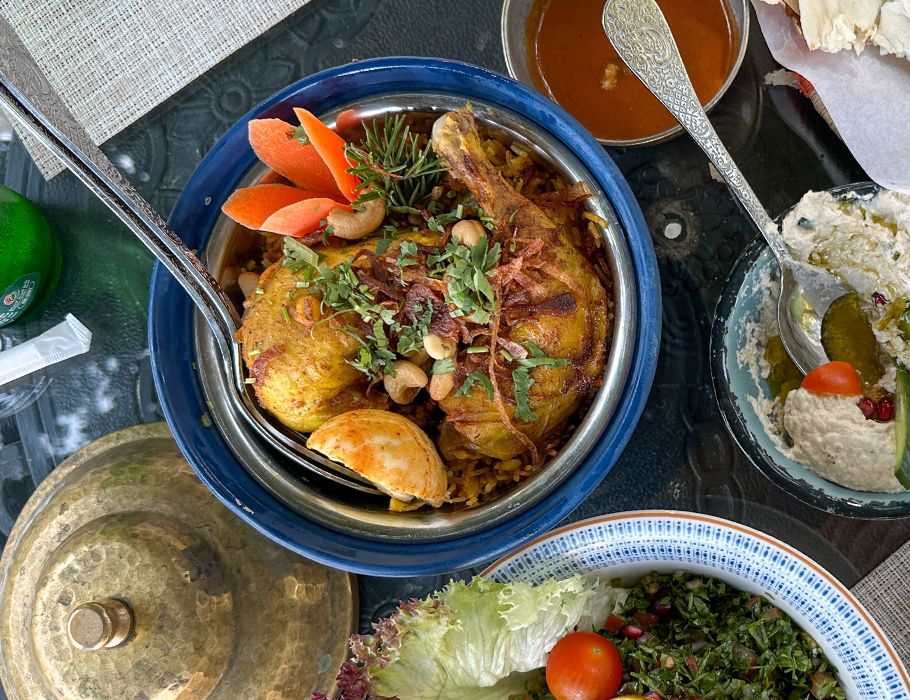
Saloona
A chunky and tangy tomato-based stew where meat (or fish) and vegetables are slowly simmered with fragrant spices. It’s often served with rice or bread and is a hearty feed made for sharing.
Madrouba
A creamy, savoury rice porridge made with chicken and spices – essentially Qatar’s version of congee.
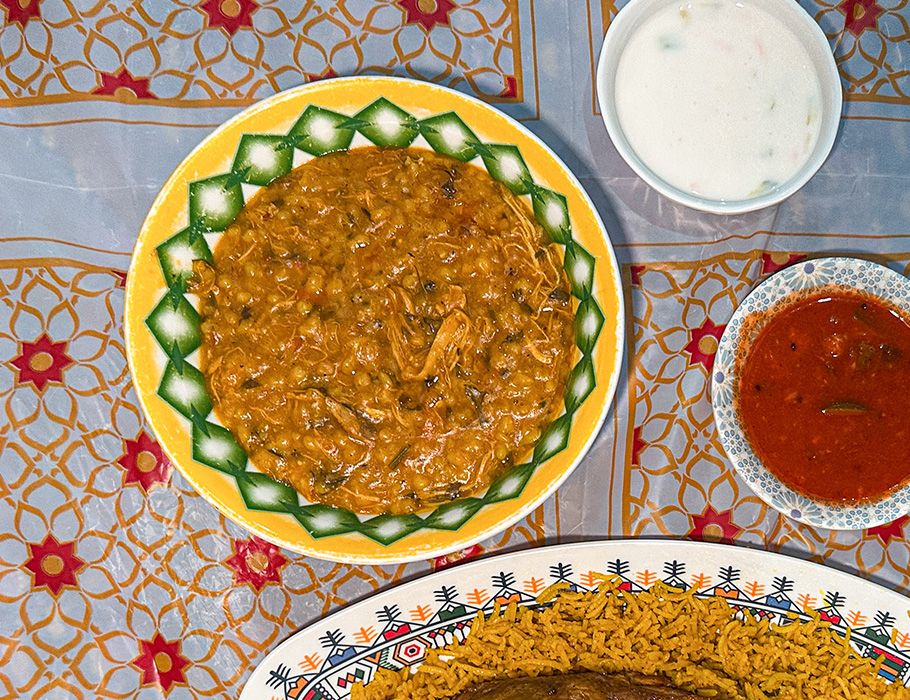
Harees
Also called jareesh, this is a savoury, porridge-like stew. Ground wheat is softened with ghee and simmered with meat and spices until soft. It’s made in a special, tapered pot and is traditionally cooked over fire. It’s commonly eaten during Ramadan to break the fast.
Balaleet
This typical Qatari breakfast is a satisfying mix of sweet and savoury, where vermicelli noodles are tossed with spices, sugar and rosewater before being topped with an egg omelette.
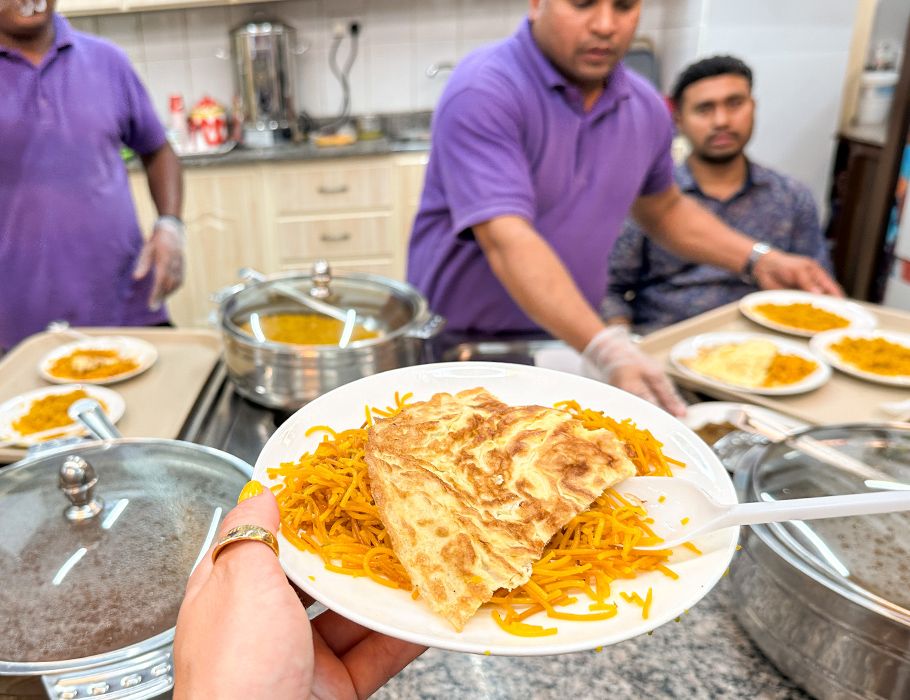
Thareed
Crepe-like flatbread called regag is broken apart to line thareed’s namesake pot, which is used to simmer lamb or chicken stew with lots of vegetables. It soaks up the flavourful liquid in the process. Thareed is often found on the iftar table during Ramadan.
Regag
Qatar’s answer to the crepe, regag is a thin, crisp flatbread cooked on a large round griddle. It comes with a variety of fillings, including Oman chips, date syrup, eggs, Nutella and cheese. Regag is a hugely popular street food and easy to find at Souq Waqif.
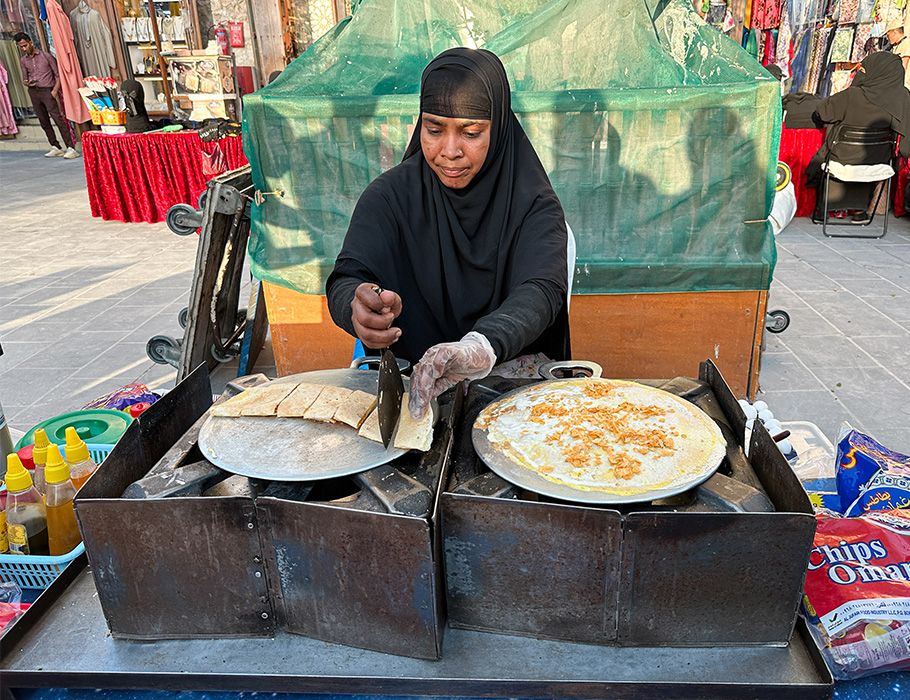
Margoog
A hearty meat and vegetable stew (often lamb or chicken) with pasta-like discs made from whole wheat. Seasoned with spices and loomi.
Baranyoos
Also known as muhammar, this is a simple seafood dish of grilled fish on rice drizzled with date syrup.
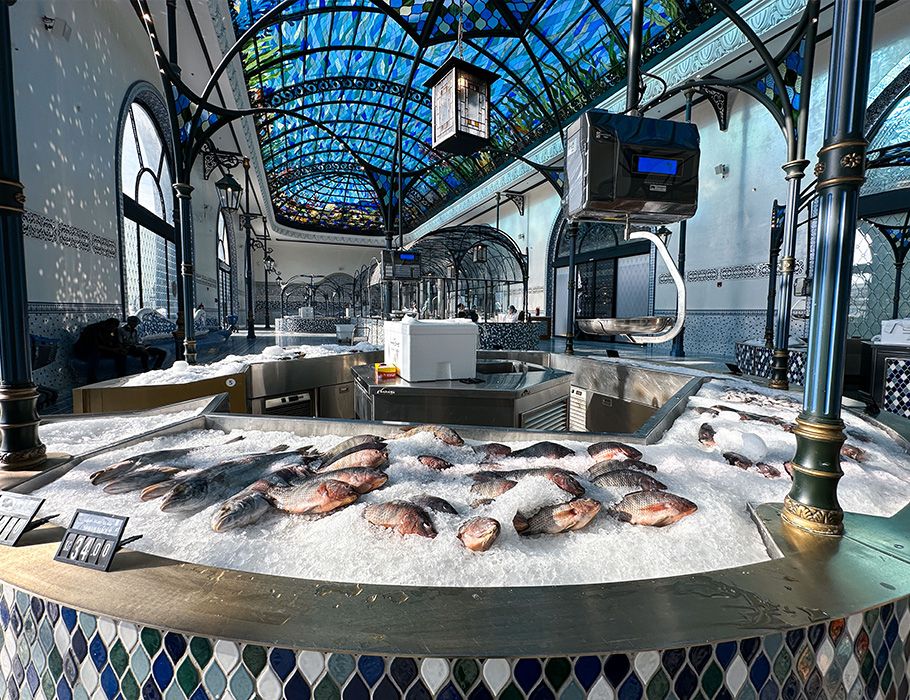
Quzi
Quzi (also ghuz ior ghoozi) epitomises the communal spirit of Qatar’s food culture. It consist of a whole roasted lamb on spiced rice with nuts and raisins added for texture. It’s a celebratory dish served at gatherings and special occasions.
Shawarma
Shawarma is by no means unique to Qatar and is popular across the Middle East and beyond. It originates from the Levant during the Ottoman Empire, but wherever you are in the world, it consists of slow-roasted meat stacked on a vertical spit that’s thinly shaved off as it’s ready to be served. They’re ubiquitous in Doha and extremely delicious.
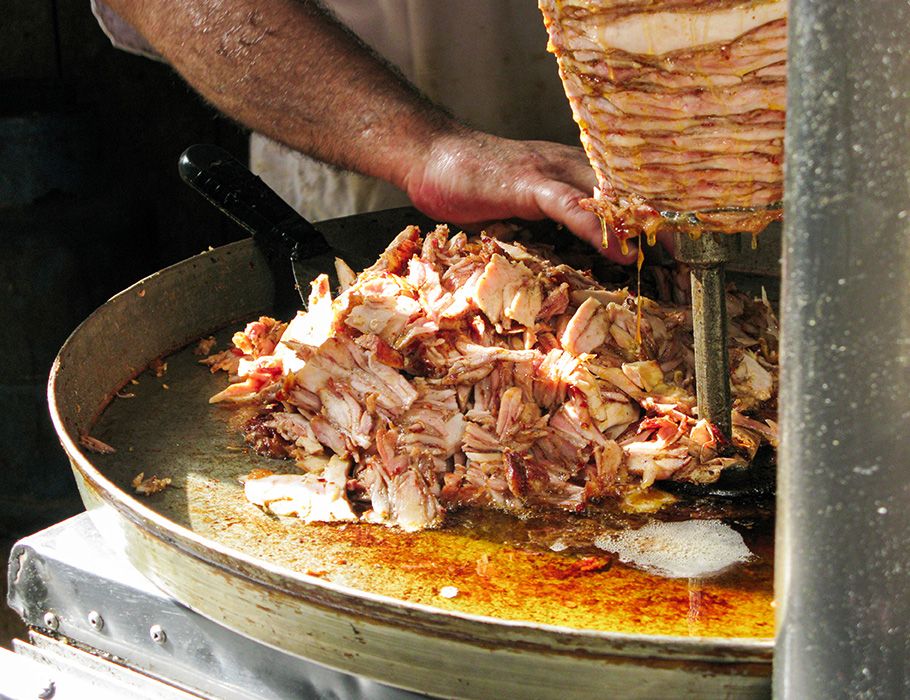
Khanfaroosh
Single-serve deep-fried cakes heady with spices like saffron, cardamom and rosewater. They’re soft, spongy and usually dusted with icing sugar or drizzled with honey or syrup.
Mahalabiya
Also known as mahalabia, this popular milk pudding is a staple across the Middle East. Creamy, subtle and sweet, it’s often topped with nuts and perfumed with rosewater.
Aseeda
Also known as asida, this is a sticky pudding made from flour, water, dates and spices that forms into a thick paste. It’s often eaten for breakfast and can include cardamon, cloves and saffron. It’s sometimes served with date syrup and makes for a wonderful afternoon treat with gahwa (spiced black coffee).
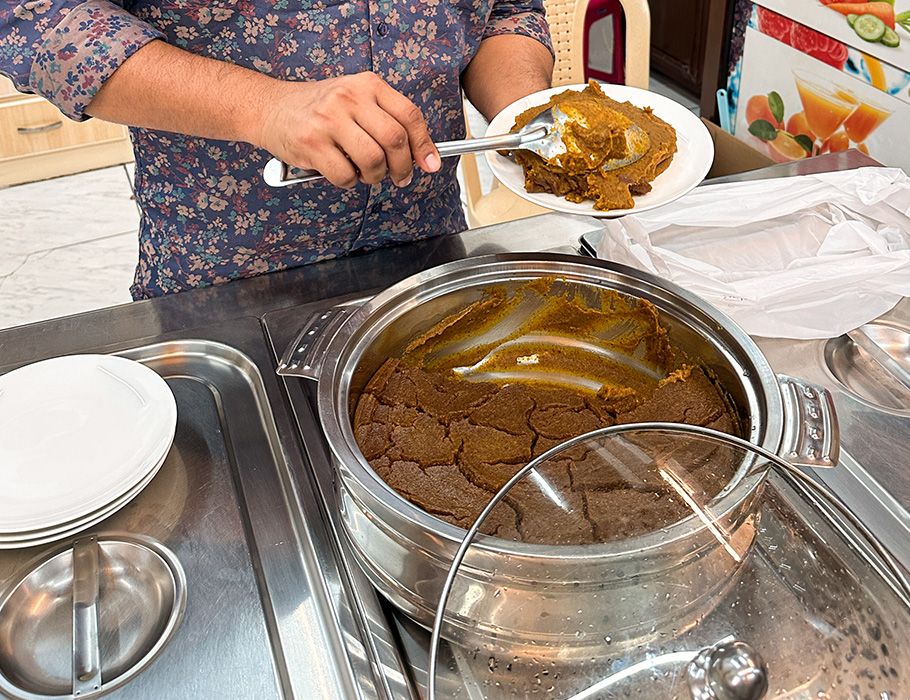
Umm Ali
This popular Egyptian dessert, akin to a spiced bread and butter pudding, is extremely popular in Qatar. It’s comforting and textured thanks to the creaminess of milk, flaky pastry, crunchy nuts and warm spices.
Kunafa
Also spelled kunefe, there are bakeries in Doha dedicated to this traditional Arab dessert. It’s made with kadayif pastry (aka phyllo or angel hair pastry), layered with cheese, and soaked in sugar syrup. Buttery, crunchy, sweet and salty, it’s usually served with nuts and sometimes perfumed with rosewater.
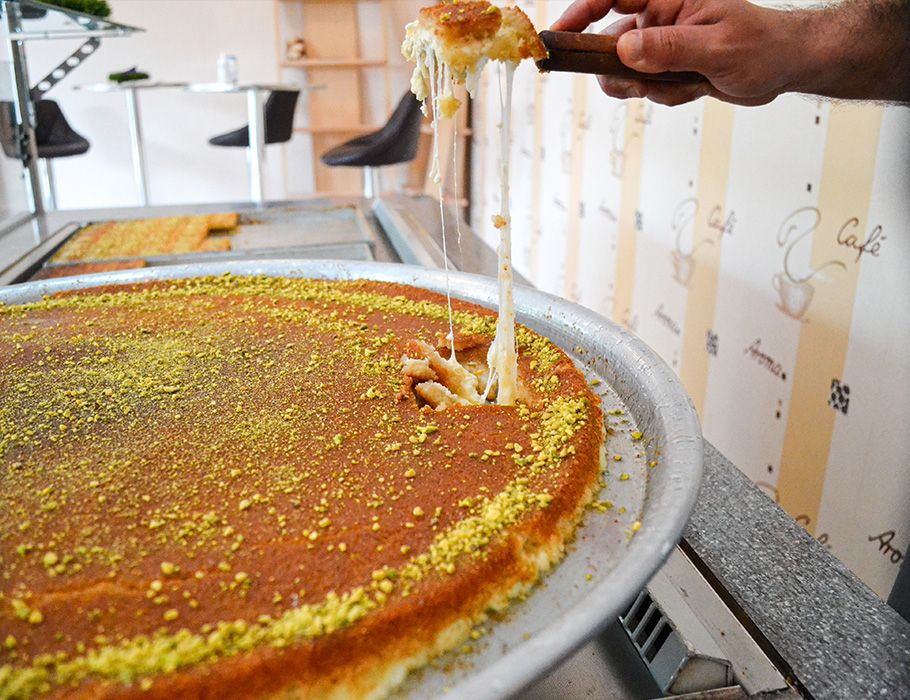
Luqaimat
Bite-sized, doughnut-like dumplings that are deep-fried until golden and drizzled with syrup. The best are crunchy on the outside and pillowy-soft on the inside.
Gahwa
Also spelled qahwa, this spiced, Arabica coffee is mixed with cardamom and often served with dates. It’s technically served black, but is actually tinged yellowish-green.
Karak
You’ll find this spiced milk tea all over Qatar. It hails from the Indian subcontinent and is sweet, creamy, and spiced with cardamom. Saffron, ginger or cinnamon are sometimes added as well.
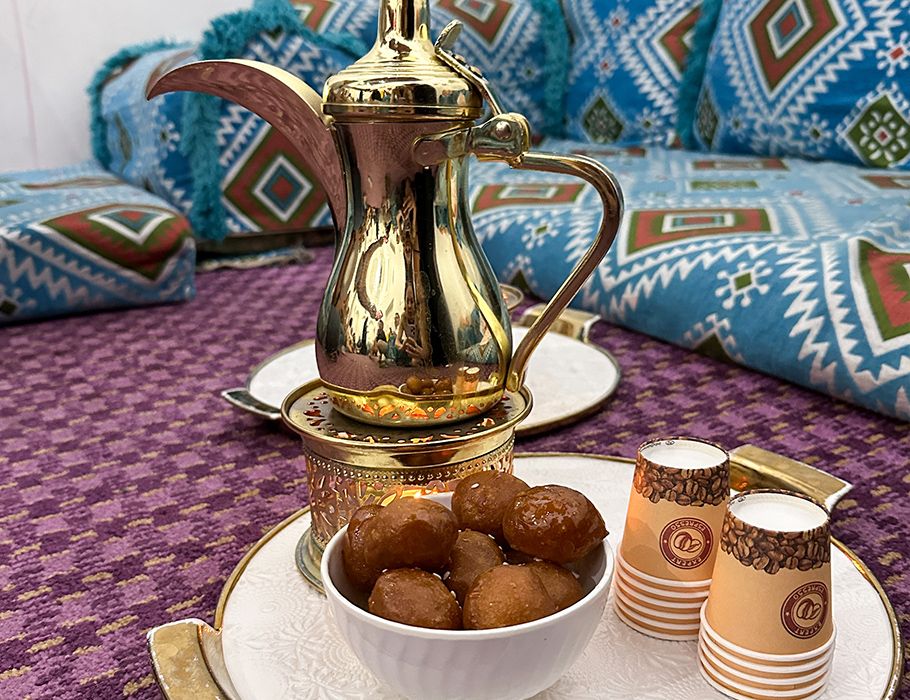
BONUS: Fagga (Desert Truffles)
If you visit Doha between December and March, look for desert truffles at local souqs. Although related to the luxury European varieties, they are a world apart. You can read more about how to find, prepare and eat them here.
Read this article for where to eat in Doha, and what to do in between meals.
Join the Eat Curiously Movement
Subscribe to the food newsletter that goes deeper.
